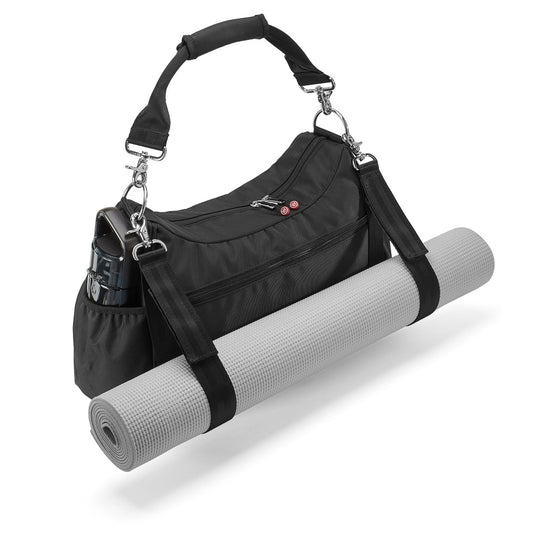Fat loss is a formula. Use this step-by-step process to figure out how many calories to eat in order to burn fat and lose weight.

When we first started getting on a roll with losing weight, one of the things we did was learn how many calories we should be eating each day (and in what ratio of protein/carbs/fats).
Wow, was it eye opening. After we used the formula below to figure out our target calories, then we started weighing and measuring our food for our meals. Boy were we over-doing it with portion size on things like chicken breasts (the average breast is around 8 oz and I was shooting for 4 oz per meal), peanut butter, and oatmeal!
Fast-forward 5+ years and I no longer count calories. It's a bit of a slippery slope because once you start, it can be slightly... addictive, especially for me, a type-A perfectionist! That being said, I can look back on my calorie counting days lovingly, knowing that they were the bridge that I needed to get from obsessively jumping from diet to diet and the lately fat loss trick over to a healthier, more whole food based approach to healthy eating.
No one learns to ride a bike without training wheels right? Well, calorie counting was my training wheels. It helped me to assess where I was so that I could understand what I needed to do to get to where I wanted to be, weight-wise. So, if you can relate to that at all, and want to understand how many calories you should eat for fat loss, here's the quick 3-step process we used to quickly find out how many calories we should be taking in, in order to lose weight.
Step One - BMR
Find out what your Basal Metabolic Rate (BMR) is, or specifically, how many calories your body needs to function properly if you spent the entire day sedentary. I recommend using this calculator:
Step Two - BMR Plus Activity
Since you (hopefully) do not sit still in bed all day, you must add in the calories you burn through activity. Once you have your BMR, use the Harris Benedict Formula below to determine your total daily calorie needs depending on your activity level.
Harris Benedict Formula To determine your total daily calorie needs, multiply your BMR by the appropriate activity factor:
- If you are sedentary (little or no exercise) : BMR x 1.2
- If you are lightly active (light exercise/sports 1-3 days/week) : BMR x 1.375
- If you are moderately active (moderate exercise/sports 3-5 days/week) : BMR x 1.55
- If you are very active (hard exercise/sports 6-7 days a week) : BMR x 1.725
- If you are extra active (very hard exercise/sports and physical job or 2x training) : BMR x 1.9
So, to give you an example, a 30 year old woman who is 5’-6” and 150 pound would plug her information into the calculator above and find out that her BMR is 1476.6.
Then, since she is fairly active, exercising 3-5 days per week, she would look at the formula above and see that she would multiply 1476.6 by 1.55, to equal 2288 calories. That is the number of calories that her body burns on an average day.
Step Three - Adjust for Fat Loss
After you have figured out your daily calorie needs, its time to adjust for fat loss. This is where most people make a mistake. They take the deficit too far. In order to lose one pound, you must be in a deficit of 3,500 calories per week, or 500 calories per day (3,500 calories divided by 7 days).
This is where the topic of “starvation mode” comes into play. I’ve done quite a bit of research on this topic and what I have found both on my own personal fat loss journey and through research is that if you have a lot of weight to lose, you are safe with a deficit of 1000 calories per day, or a 2 pound loss per week. If you are on your last 10 pounds or less, you will want to stick closer to the 1 pound per week range, or a deficit of 500 calories per day, so as not to go too low with your daily calories.
Note: When you first begin, you may lose more than this for the first few weeks, which is normal, that is water weight and bloat. After the first few weeks, you should even out at a 1-2 pound loss per week. Be aware, you do not want to lose much more than this, as it will not be fat, anything above this range will be muscle for sure. So going back to the example above, if the woman’s goal weight is 130, she would have a total weight loss of 20 pounds.
She would want her weight loss goal per week to be between 1-1.5 pounds per week, so that she does not take her calories too low. Her total daily intake of calories should be between 1563 and 1788. As she begins to lose weight, she will want to recalculate her BMR, and then stick to the 1 pound per week (500 calorie deficit per day) range as she gets within 10 pounds from her goal weight.
Slow and Steady Wins the Race
I know that you are probably thinking, wait a minute, I don’t want to prolong this, I am going to just go for the gold and lower my calories a ton to get to my goal quicker. I will tell you from experience, that is the fastest way to hit a metabolic brick wall!
You go too low with your calories and your body shuts down. So, learn from my mistakes when I tell you, if you only have a few pounds to lose be patient and do it slowly. I know it's tough to be patient, but you will thank me when the weight stays off.
Also, I want to mention that with any fat loss program, you will want to incorporate a weight training program as well, so that you keep your muscle and don’t turn into a pile of mush and skin. Lastly, these are just estimates, meaning every body is unique.
Keep an eye on your fat loss and if you start losing too fast or too slowly then you will want to adjust your calories up or down accordingly.





